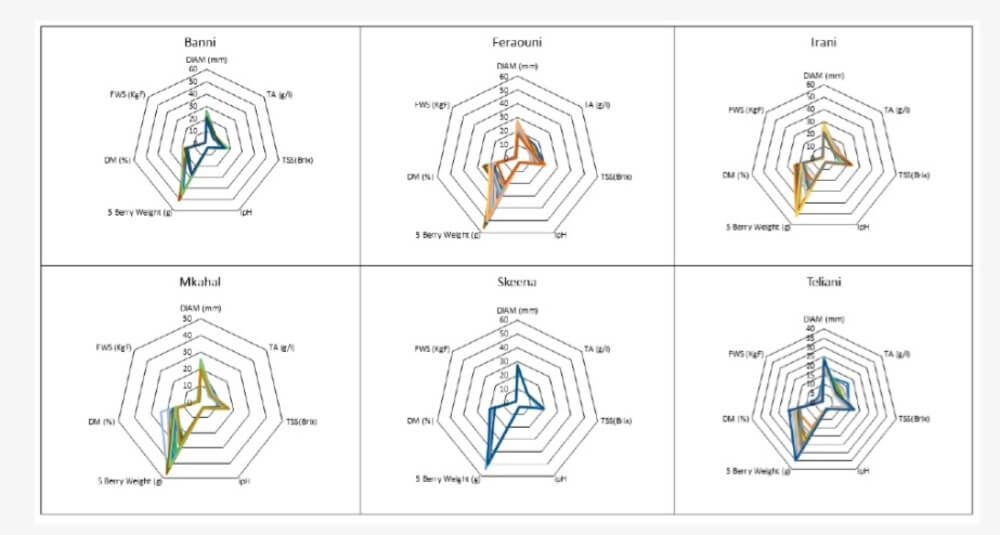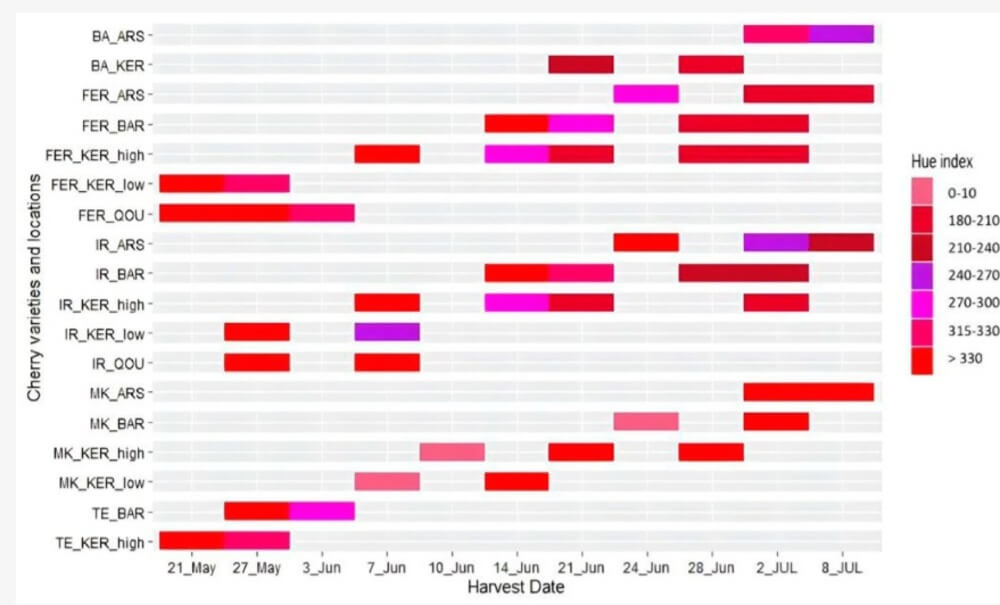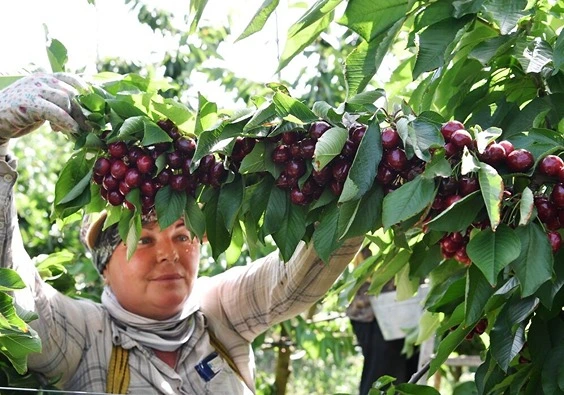In Lebanon, the harvesting period for sweet cherry typically spans from May to July. Nevertheless, the implementation of novel early cultivars in regions with low and medium altitudes (500–1000 m) and late cultivars in higher altitudes (1800–2200 m), in conjunction with the utilisation of postharvest technology, has the potential to prolong the harvesting season.
In addition to their quality features, sweet cherries possess many phytochemicals that contribute to their nutritional value coupled at the same time with its potential health benefits for human health.
Sweet cherries are rich in anthocyanins, a class of compounds that have been associated with anti-inflammatory properties, potential anti-cancer effects, and cardiovascular protection. In addition to their inherent sweetness, cherries possess a considerable amount of flavonols, including quercetin, which has notable anti-inflammatory and antioxidant properties.
It is noteworthy that the composition of polyphenols in sweet cherries can exhibit variations in terms of specific types and quantities, contingent upon factors such as the variety of cherry and the conditions under which they are cultivated. For instance, a prior investigation examined the phenolic properties of six distinct sweet cherry varieties cultivated in Spain.
The findings of the study indicated that there was variation in the total phenolic content among the different cultivars, with the "Sweetheart" and "Lapins" exhibiting the highest levels.
The objective of this research was to evaluate the fruit quality of the primary sweet cherry cultivars cultivated at different altitudes in Lebanon, with the intention of determining their suitability for fresh consumption.
This has been assessed by the researches of the Faculty of Agricultural and Food Sciences of the American University of Beirut by examining the fruit quality attributes of different cherry varieties (cv. “Feraouni”, Banni, “Irani”, “Mkahal”, “Teliani” e “Skeena”), including skin colour, fruit firmness, dry matter content, fruit diameter, weight, titratable acidity, total soluble solids content, and pH at harvest.
Furthermore, the quantification of total phenolic content, anthocyanins, and antioxidant capacity was conducted in order to assess the biological activities of these varieties. This assessment serves as a crucial component in the advancement of sweet cherry breeding programmes, with the ultimate goal of developing novel cultivars that possess heightened cytotoxic properties against potential human diseases.
The results of the study revealed that certain varieties, namely "Teliani" and "Irani", exhibit a more pronounced sensitivity to changes in altitude compared to other types, specifically in relation to their maturity indices
 Figure 1. Radar showing the minimum and maximum values of maturity indices in different locations over the harvesting season.
Figure 1. Radar showing the minimum and maximum values of maturity indices in different locations over the harvesting season.
Source: Nacuzzi et al., 2023.
.The duration of fruit development was shown to be extended with increasing altitude, resulting in higher fresh weights and sizes in most cases. However, a decrease in fruit firmness was noted as well. Although there were no significant differences in total phenolic content (measured as gallic acid equivalent) among the different varieties, the antioxidant activity was found to be the lowest in the "Banni" variety.
On the other hand, the total anthocyanin content was observed to be highest in the "Irani" and "Feraouni" varieties, while the "Mkahal" and "Banni" varieties exhibited the lowest levels of anthocyanins
 Figure 2. Heatmap illustrating color development of the cherry varieties in their growing locations during the ripening season.
Figure 2. Heatmap illustrating color development of the cherry varieties in their growing locations during the ripening season.
Source: Nacuzzi et al., 2023.
Moreover, it is noteworthy that the geographical locations had a significant impact on the total phenolic content and reduction of ferric complex, whereas the total anthocyanin content and radical scavenging activity was not affected. The optimisation of final fruit quality necessitates the careful evaluation of various elements, including genetics, farming practises, rootstocks, ambient conditions, growth regulators, storage methods, and emerging preservation technologies.
Source: Nacouzi, D.; Masry, R.; El Kayal, W. Quality and Phytochemical Composition of Sweet Cherry Cultivars Can Be Influenced by Altitude. Plants 2023, 12, 2254. https://doi.org/10.3390/plants12122254.
Melissa Venturi
University of Bologna (IT)
Cherry Times - All rights reserved












